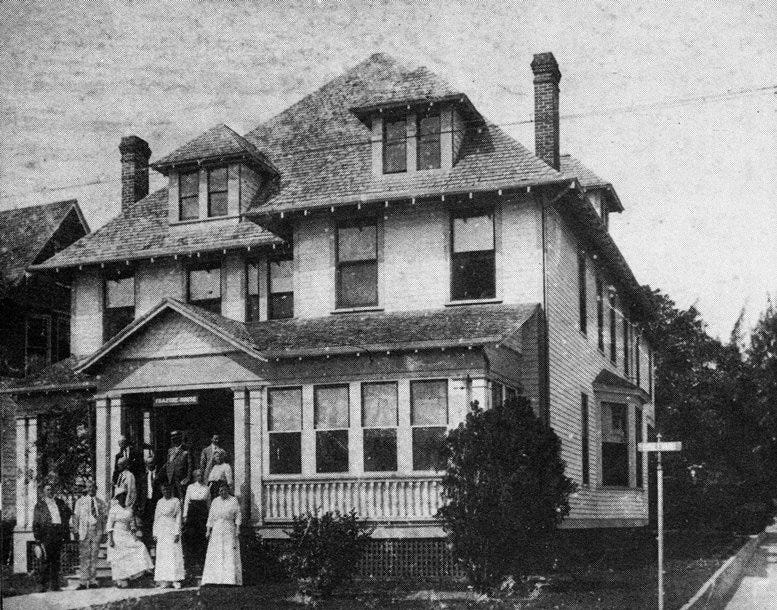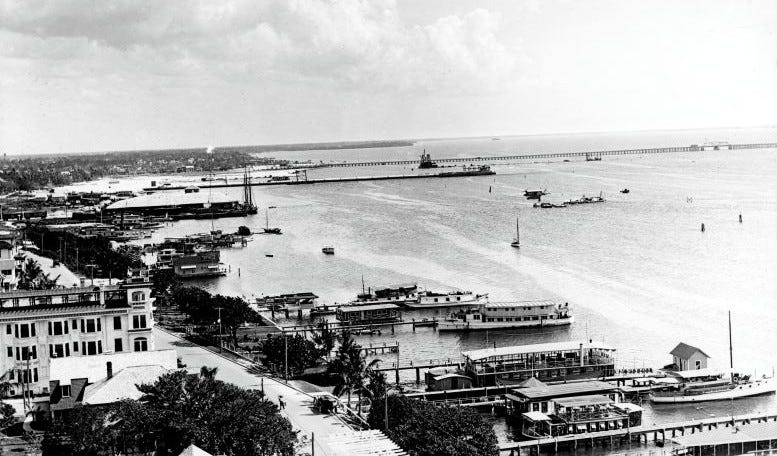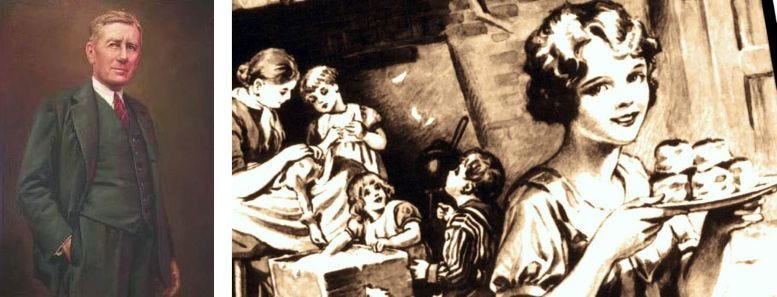Frazure House on Biscayne Blvd in 1917
The story of an iconic residence that operated as a rooming house on what later became the site of the Columbus Hotel in the 1920s.
Anton Hulman, a prominent businessman from Terre Haute, Indiana, purchased his retirement home on The Boulevard in the late 1890s. The residence, located at 1100 Boulevard, today the southwest corner of Biscayne Boulevard and Northeast First Street in downtown Miami, stood along what was later renamed Biscayne Boulevard in 1926.
Hulman was the second-generation leader of his family’s enterprise, founded in Terre Haute by his father, Herman. Originally a grocery business started with Herman’s brother, the venture shifted after his brother Francis died at sea aboard the Astria. Herman expanded operations into distilling and beverage distribution, laying the groundwork for future success. When Anton took over, he centered the company around a popular starch product called Clabber Girl, which became a household name. By the close of the 19th century, the Hulman clan had risen to become one of Indiana’s wealthiest families.

Anton purchased the residence on The Boulevard as a winter home to escape the Indiana winters. The Hulman family lived in the home from the late-1890s until they moved into their second Miami home near Lummus Park along the Miami River in 1915. Their Lummus Park residence was designed and built by the well-known Miami architect George L. Pfeiffer.
Unrelated to the home in the picture, Anton’s only child, Anton Jr. or Tony, took over the family business at the age of thirty and was probably best known for buying the dilapidated Indianapolis 500 racetrack in 1945. As a matter of coincidence, Tony purchased the racetrack from an ownership group that was headed by Eddie Rickenbacker for whom the Rickenbacker Causeway is named.
After the Hulman’s moved out of 1100 Boulevard, C. M. Frazure and his wife purchased the home to operate as a rooming house. Housing was in short supply in Miami in the mid-1910s and single-family home conversions to rooming houses were very common during this time. The couple referred to their converted inn as the “Frazure House.”

Like many Miami hotels and boarding houses of the era, the business operated only during the winter season, closing each summer for renovations and improvements. After leasing the property for several years, the Frazures purchased the residence from the Hulman family in August 1917 for $35,000.
They continued running the establishment until March 1920, when they sold the property. Soon after, the home was demolished to clear space for a planned expansion of the McAllister Hotel—an expansion that ultimately never materialized. The lot remained vacant until 1925, when construction began on the Columbus Hotel, which officially opened its doors on February 8, 1926.
Resources:
Booklet: “Memories of Old Miami”, by Hoyt Frazure as told to Nixon Smiley.



